
|
||
|
Portland art blog + news + exhibition reviews + galleries + contemporary northwest art
|
||
The New Portland Art Museum 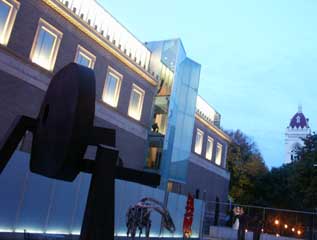 Anyone who was in Portland the first weekend of October knows it was an art endurance test that most of us here are still recovering (or deinstalling) from. Ok it wasn't as ridiculous as Art Basel Miami or the Armory Show/Whitney Biennial Weekends but it was a lot more active and spread out than say a Site Santa Fe opening. What it amounted to was a hell of a lot more than one human being can hope to take in. In fact, I was involved with the three biggest events: the opening of the Portland Art Museum's Mark Building, the Affair @ the Jupiter Hotel art fair and my Fresh Trouble show. Then came all the First Thursday openings a few days later. A very busy time. The main event, the Portland Art Museum's new North Wing includes the new Jubitz Center for Modern and Contemporary Art (28,000 sq feet of new galleries) and we note that the younger members of the Jubitz clan opted to fund it to the point of naming rights. In conversation I've been impressed with their knowledge and this bodes well for the long term vitality of the museum. Now for some generalist first impressions (I will leave the Sophie Calle exhibition for another time)… The Collection: We lack the strong collection of my hometown Milwaukee Wisconsin (or the big guns at the Art Institute in Chicago) but I'm pleased to no end that the Dan Flavin, the Gilbert and George and the Ernst Ludwig Kirchner are all on display for the fist time in memory. We aren't going to have MoMA's depth but we do have some surprising works and that is what makes these smaller city museums so much fun, this is a starting point. It is the home of the Clement Greenberg collection and it gives the museum a colorful but elemental air along with a historical center from which to build. There aren't too many masterpieces here but this is an exciting youthful west coast museum and a choice Warhol, Barnett Newman or Anselm Kiefer etc. could really do wonders in solidifying the gravitas of the collection. Yet, there is a hell of a lot on display and I was pleased to see nice newish works by Suen Wong, Yek, and that fantastic Matthew McCaslin, "Alaska". All are arists whose place in history is somewhat up in the air. Another work that was on display for the first time in the museum: "Peach Blossom Spring" by Jacci Den Hartog, tied in nicely as a very sticky sweet West Coast adaptation of Eva Hesse and the light theme present in much of the work. (Flavin, McCaslin, Irwin and even Segal's window scene where the panes don't let any light in etc). 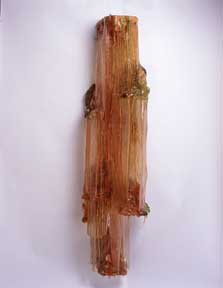
Jacci Den Hartog Peach Blossom Spring 1994. polyurethane; plaster; steel. Portland Art Museum, Gift of Peter Norton © Jacci Den Hartog Also, I know they wanted to show what was in the collection and that is a smart educational strategy (Portlanders need to know the numerous gaps so they can fill them) but in a couple of months the museum should thin this installation out a bit… especially in the minimalism room. It's a bad idea to have a Sol LeWitt, Agnes Martin, 2 Robert Mangolds, Carl Andre and a Frank Stella practically on top of each other. More successful was the installation of Joseph Kosuth's "Five Words in Orange Neon" along with a leering gargoyle of a Robert Longo at the top of the 4th floor stairwell. 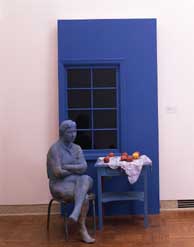
George Segal Helen with Apples 1981. Paint and plaster on wood. Portland Art Museum, The Evan H. Roberts Memorial Sculpture Collection. Art © The George and Helen Segal Foundation/Licensed by VAGA, New York, NY The dedicated photography collection rooms are a slam dunk and I can't think of a single West Coast Museum that had a more satisfying and surprising selection on view. A great job was done by adding big names like Arbus and Stieglitz's iconic "Steerage" but the lesser known names on display completely hold their own. There are more great photographic images than great photographers and this proves it. 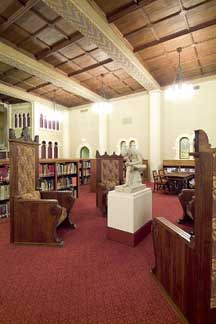
Library: I'm really in love with the new Crumpacker art library. I'll choose books over a room of party goers so all the old world cloister-ish-ness of this library is really exciting. The book collection is large and full of surprises and it's been years since I've seen it. This is the real sleeper hit for those of us who love art books and although Powells Books is nice, it has nothing on this. 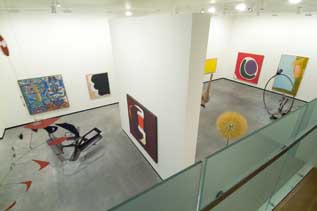
The Galleries: For now this is what matters most since we are stuck with them. Luckily, they are very nice, with lots of eccentric angles that remind me of the corridors of the new Walker Art Center. Actually, the gallery spaces themselves have a lot more character than those at the New Walker Art Center, new MoMA or the Milwaukee Art Muesum's Calatrava exhibition spaces. At those museums their new galleries are intentionally generic which bothers me after all the fantastic architecture one navigates to get to them. There are some white boxes here too but they have some interesting sight lines like we saw at the new MoMA. I'm not a fan of completely generic gallery spaces and chief curator Bruce Guenther and architect Ann Beha have done something special here (it is low key but edgy) and if the art gets thinned out a bit I think this will be one of the funnest damn museums I can think of because its such an athletic space. I like stairs, angled glass, windows and concrete so this is right up my alley.. My thought is the architect's heavy hand disappears here but some presence of salient architecture doesn't, so it's pretty successful. I'm still getting used to the glass pleat from outside the building, but inside it affords some really nice views of the park blocks. In fact the constant twisting and turning of the Jubitz Center reminds me a lot of the kick ass feel the Seattle Central Library by Rem Koolhaas… only without all the distracting attempts to reinvent the function of the building and visual grandstanding that doesn't work for a generalist art museum's galleries. Instead, it's an exciting series of angles and solid spaces and planes. I was expecting something a lot more boring… instead it reminds me of Orson Welles' movie "The Trial" which constantly twists and turns around corridors. This is high praise considering I was expecting just a bunch of rectangles. Yes, I'm somewhat of an insider on this project (campaign co-chairman for the Contemporary Art Council) but I really LOVE this design and once the museum gets past its "show em what we got… and don't got" opener I am going to like this a lot. I like the hard concrete floors, all the glass and the great multi floor sightlines. Still, I felt that the pairing of a regional painter like Carl Morris and the Alexander Calder mobile was provocative and completely unconvincing. Morris is a fine regional modernist painter but his work is simply outclassed… replace the Morris with the nice yellow Rothko on loan to the museum for a local connection with about a billion times more impact. Put the Morris where the loaner Rothko is… it is still a place of honor at the end of a gallery. Rothko grew up here and had his first solo show at the museum so his emphasis here is absolutely vital. Still, the overall feel is highly successful. The early 20th century galleries with wood floors give way to a tougher more unforgiving environment as one ascends the floors of the new Jubitz Center. The next trick will be to display major works by 60's POP artists and 80's artists like Basquiat and Anselm Kiefer, which would really fill out the collection. What this achieves is a baseline and I expect the general level of conissuership in the city will rise exponentially. Nicely done. Posted by Jeff Jahn on October 12, 2005 at 1:00 | Comments (1) Comments I attended PNCA during the early 90s when it was still housed in the Portland Art Museum. During my years there. PAM purchased the Masonic Temple (now Mark Building). Not knowing what to with the new building and not having enough space for classes, PAM let PNCA use the building for classes and painting studios. The students kind of had the run of the place for a few years as museum guards were our friends. There were scattered reports of ghost sightings from both students and guards. In fact, you could not bring up the subject of hauntings with the librarian because he'd seen things there that unnerved him. The building had a very curious feeling to it, and it kind of grew on you after a while. It was so strange to watch it over the past year as it was being gutted. It looked like an empty skull. I feared that the only thing left of the building I knew would be the exterior and another historic landmark would be forever erased. I was so happy to see that a good portion of the old interior was refurbished instead of demolished. I haven't made it to the library yet but your photo has inspired me to check it out today while running errands downtown. The Jubitz Center is really well done. The museum has come along way in the last 15 years. Now if they would just hang the David Park painting that they have in their collection - all would be right with the world. Posted by: Radio Gretchen Post a comment Thanks for signing in, . Now you can comment. (sign out)
(If you haven't left a comment here before, you may need to be approved by
the site owner before your comment will appear. Until then, it won't appear
on the entry. Thanks for waiting.)
|
| s p o n s o r s |
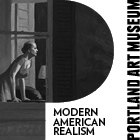 |
 |
 |
 |
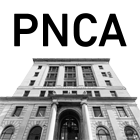 |
 |
 |
 |
 |
 |
 |
 |
 |
 |

|
Site Design: Jennifer Armbrust | • | Site Development: Philippe Blanc & Katherine Bovee | |


![[TypeKey Profile Page]](http://www.portlandart.net/nav-commenters.gif)